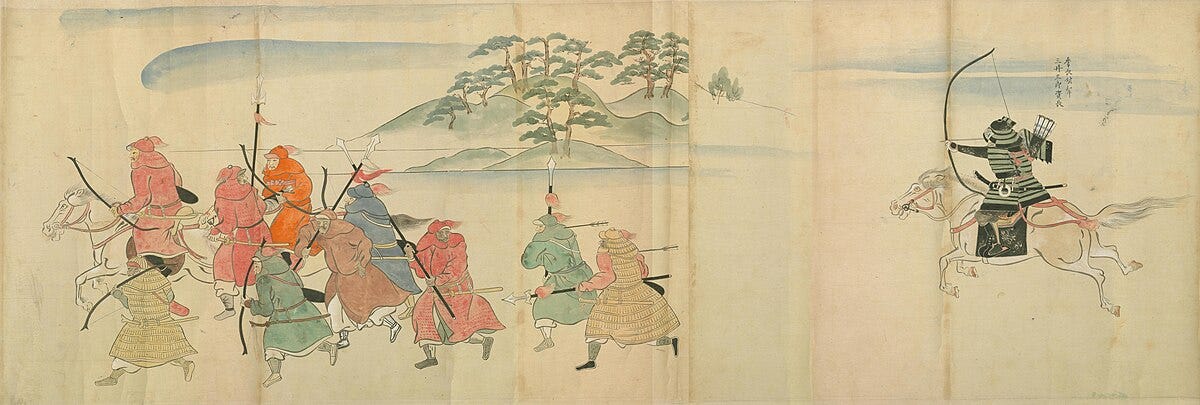With the release of the new Assassin’s Creed: Shadows, a game set during the 16th century Japan, I wanted to find a way to shed some light on the ancient history of Japan. This idea took me right back to a course I took during my MA degree, which looked at the social and political history of medieval Japan. While studying, I remember reading the work of two scholars, Karl Friday and William Farris, that completely blew my mind. Their focus: the origins of the samurai.
The samurai are an iconic symbol of medieval Japanese history. A socio-military elite, they are emblematic of a very specific historic culture of Japan. Much can be written about them, but today we will just focus on them as military combatants.
At their height of influence, they were considered to be experienced military specialists, clad in a leather armour, mounted on horseback, using stirrups that offered a stable base on which to stand and use their bow with lethal accuracy, and of course carrying their iconic curved swords. Sometimes compared to the medieval knight, their position in Japanese society has often been explained (misleadingly) through a European lens.
Their ancient origins, on the other hand, can be more firmly identified.

Meeting the Emishi
In the 8th century CE, the Japanese imperial court, situated in Nara, aimed to subjugate the people to the north of the island of Honshu, known disparagingly as the Emishi (the barbarians). The Emishi were incorrectly labelled as a savage people, who lived in tribal groups and did not even grow crops (this was actually not the case). They were portrayed as cowardly, untrustworthy, and animal like:
We hear that the Eastern savages are of a violent disposition, and are much given to oppression: their hamlets have no chiefs, their villages no leaders, each is greedy of territory, and they plunder one another. . . Their clothing consists of furs, and they drink blood. Brothers are suspicious of one another. In ascending mountains they are like flying birds; in going through the grass they are like fleet wolves. When they receive a favor they forget it, but if an injury is done them they never fail to revenge it.... Ever since antiquity they have not been steeped in the kingly civilizing influences. (Nihon shoki, 110 6th month)
These accusations are ones we commonly hear banded about by dominant cultures. The Greeks say similar things about the Scythians, the Egyptians of the Kush, and the Han Chinese of the Yue. As with each case, we must take it with a large bucket-full of salt!
Over a period of 40 years (774-811) this imperial expansion did not always go according to plan. The Japanese army was built on the foundation of Chinese precedents, so it relied on large-organised units of men, with an impressive display of noise and colour used as a way to intimidate their enemy. Unfortunately for them, the Emishi did not fight in open battle; they preferred to exploit their own skills in horsemanship, archery, and their impressive speed to engage in guerrilla-style tactics:
The barbarians dig in like wasps and gather like ants. They are always at the head of disturbances. When attacked, they flee to the mountains and bushes; when left alone they plunder the forts. . . They cover their tracks in the mountains and fields and, though they look for opportunities and seek openings, they fear our military power. (Shoku Nihongi, 781 6/1.)
Something needed to change.
Keep reading with a 7-day free trial
Subscribe to Our Ancient World to keep reading this post and get 7 days of free access to the full post archives.



